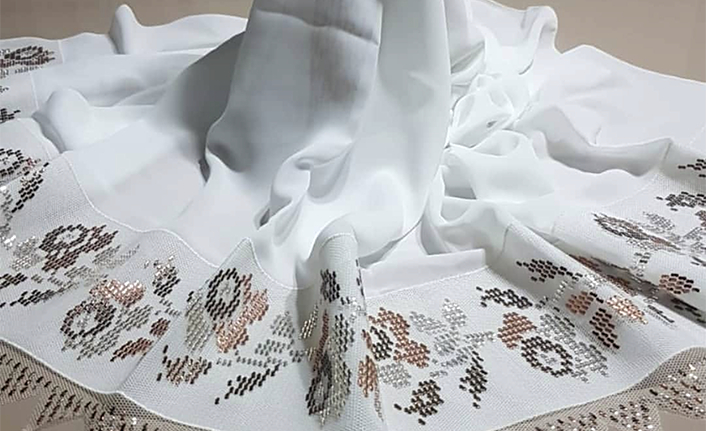Wire breaking, also known as "Bartın Work", is one of our precious arts that dates back to the 17th century and has survived to the present day. The women of that period had given weight to the fabric by embroidering motifs with wires on the edges of their headscarves in order to prevent it from flying. During this process, the wire is called “wire breaking” because it breaks by itself without the need for any cutting tool.
For centuries, motifs embroidered with silver, gold and copper wires with great care have been the jewel in crown of young girls' dowry. While it was among the forgotten crafts in time, it gained popularity again towards the end of the 20th century. In this art, flat wire 1.5 millimeters wide made of gold, silver and copper mines is used. Its appearance and width are similar to tinsel. It is broken by bending slightly down and slightly up between the nails.
The fabric, thread and pattern feature of each embroidery technique are different from each other. Wire breaking is done with the help of a special metal flat wire and a special needle. Wire breaking is performed in two ways as “+” points or “×” points. This shape is created by placing them side by side on soft fabric such as linen, silk and cotton, or by placing them with certain spaces, according to the pattern. In this art, a different needle is used, which is made of metals such as gold, silver and brass, with a length of 2.5 cm, which is flat and short, with a wide head and tapering towards the end and with two holes, the width of which can pass through the tulle holes.
The products of 'Bartın Work Wire Breaking Art' in Kayseri is offered by KAYMEK (e38), which has become a brand in the field of e-commerce in Turkey.
